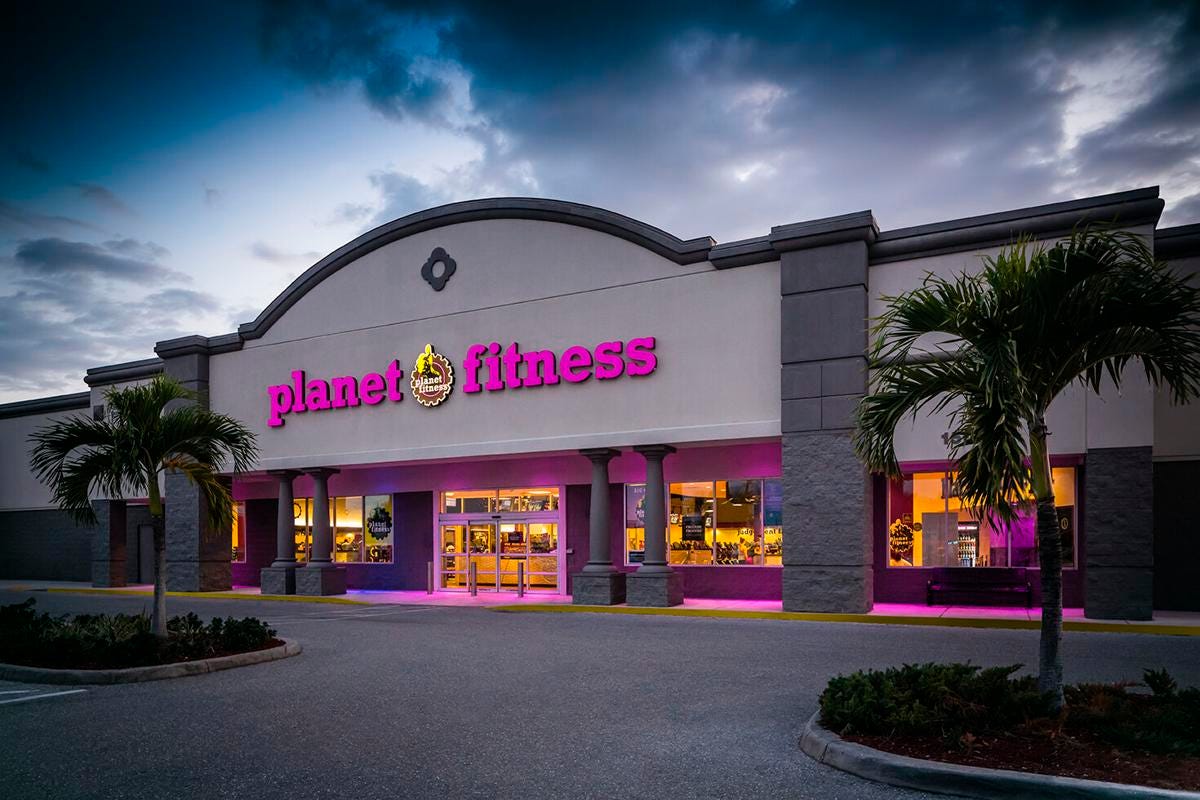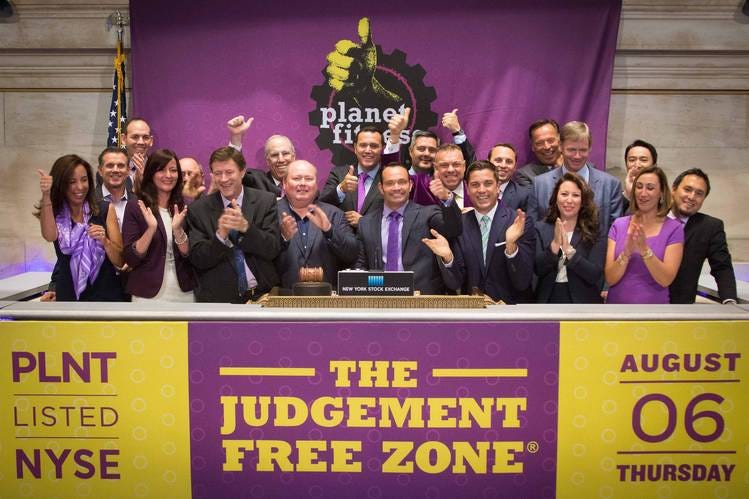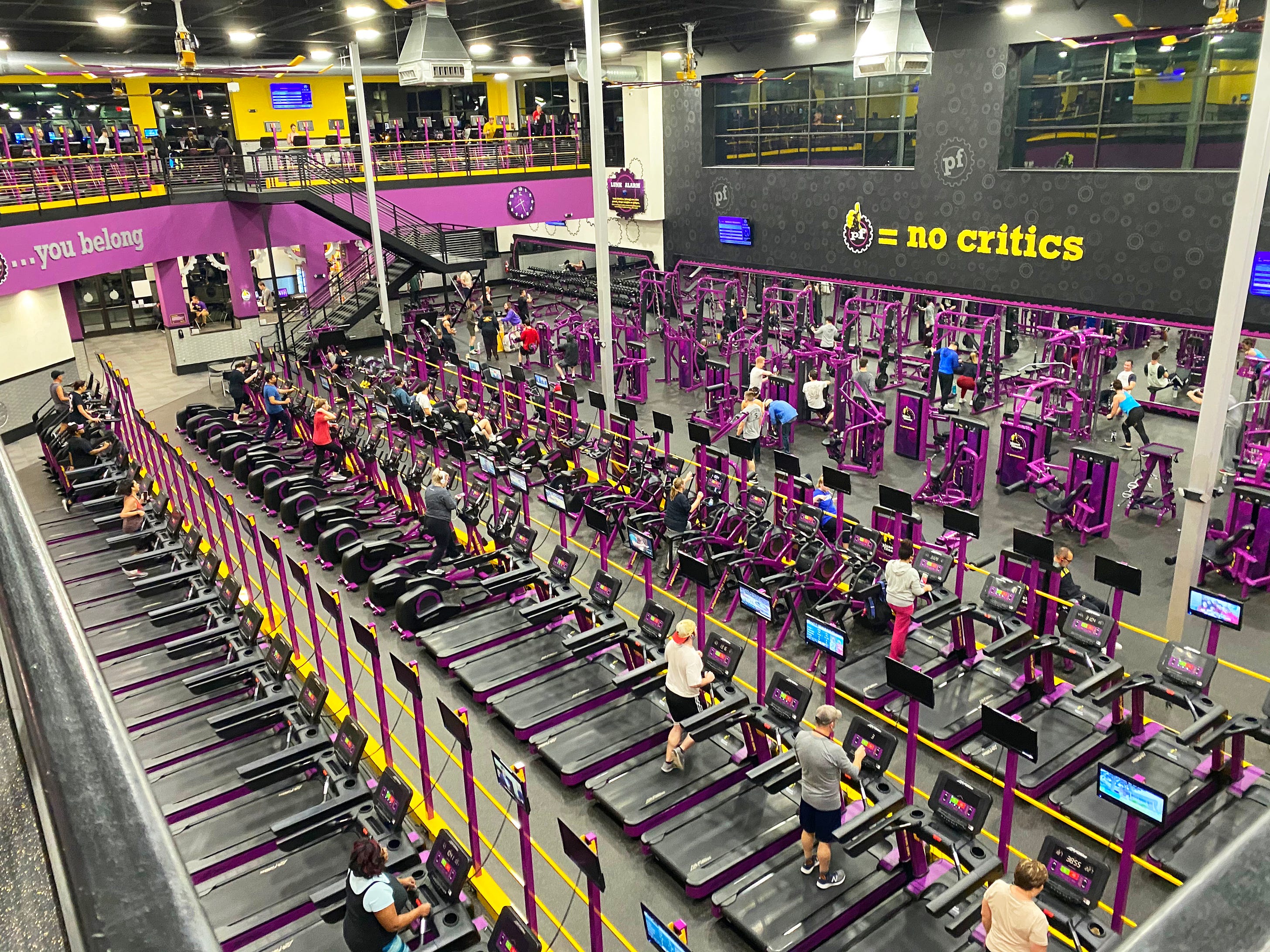The Unique Business Model That Made Planet Fitness A $6 Billion Brand
Huddle Up is a 3x weekly newsletter that breaks down the business and money behind sports. If you are not already a subscriber, sign up and join 100,000+ others who receive it directly in their inbox each week. Today At A Glance:Planet Fitness has caught a lot of crap over the years for its Pizza Mondays, Bagel Tuesdays, and Lunk Alarm. But the gym chain is a behemoth, boasting 2,500 locations and 18 million members worldwide. So today’s newsletter breaks down the business behind Planet Fitness, including how they acquire large gym spaces for pennies on the dollar and why their pricing strategy hasn’t changed in 30 years. This newsletter is also available via podcast on Apple or Spotify. Enjoy! This Newsletter is Sponsored By ButcherBox!I’ve been ordering from ButcherBox for a few years now, and it’s the single best solution I’ve found to save time while guaranteeing the quality of your food. ButcherBox delivers 100% grass-fed grass-finished beef, free-range, organic chicken, humanely raised pork, and wild-caught seafood directly to your doorstep. Yes, it’s literally that easy — and it tastes incredible! So ditch the butcher lines today and guarantee the freshness of your meat with ButcherBox. And here’s the best part: If you sign up today, ButcherBox is offering all Huddle Up readers 2 lbs of ground beef for FREE every time they order over the next year. So sign up using the link below, and everyone in your household will thank you later. Friends, Planet Fitness is not a regular gym. There are no group fitness classes. You won’t find a sauna or steam room in the locker room. Don’t expect to swim laps in a pool. And the free pizza and bagels might even make it more challenging to lose weight. But this uniqueness is precisely what makes Planet Fitness a $6 billion brand. With so much of the gym industry focusing on getting fit people fitter, niching down into specialized gyms or bodybuilding locations, Planet Fitness has found its lane. The 31-year-old brand has 2,500 locations today, including one in all 50 US states, the District of Columbia, Puerto Rico, Canada, Panama, Mexico, and Australia. And they brought in nearly $1 billion in revenue last year alone — a 60% increase year-over-year. The Planet Fitness story starts in 1992. Two brothers named Michael and Marc Grondahl wanted to start a business together, so they bought a struggling Gold’s Gym in Dover, New Hampshire, and immediately got to work. Dover had 28,000 people at the time. But only 15% of the population (4,200 people) belonged to a gym, and there was plenty of competition. So the Grondahl brothers tested many different concepts — everything from aerobics instructors and child daycare to year-long payment plans and state-of-the-art bodybuilding equipment. But the real shift came with the company’s fourth gym in Portsmouth, New Hampshire. Michael and Marc Grondahl, and future Planet Fitness CEO Chris Rondeau (who worked as a gym manager at the time), realized their phones were constantly buzzing with problems — one kid bit another kid in daycare or the aerobics instructor didn’t show up — so they returned to the drawing board and reinvented what a gym could be. Planet Fitness removed the heavy weights and introduced the “Judgement Free Zone,” effectively kicking out bodybuilders and softening its image. They then ditched the group classes, juice bars, and childcare facilities, filling the gym with nothing but equipment. And finally, they decided to open the gym 24 hours a day, 7 days a week. Still, the real game-changer was the price. That’s because by getting rid of all the fluff typically associated with gym memberships — group classes, smoothie bars, saunas, steam rooms, and more — Planet Fitness was able to drop its price to just $10/month. This was like nothing else in the fitness industry at the time, and this location in New Hampshire eventually became the template for all Planet Fitness locations worldwide. Planet Fitness is a behemoth today. They now run a franchise model with 2,446 global locations and nearly 20 million members. And with the company generating $1 billion in revenue (+60% YoY) last year alone, Planet Fitness has seen its market cap triple (from $1.5 billion to $5.9 billion) since its Initial Public Offering (IPO) in 2015. Planet Fitness By The Numbers
But to understand Planet Fitness’ success, you have to understand their strategy. Planet Fitness has charged $10 per month for its gym membership since the mid-1990s. You can cancel at any time without a fee. And based on inflation alone, that $10/month price point should be at least $22/month today. This is 80% cheaper than the average gym in the United States ($50) and 94% cheaper than an entry-level membership at a boutique gym like Equinox ($160). Planet Fitness can do this because 1) they sign cheap lease agreements with large retail locations that are struggling (Toys “R” Us, Circuit City, etc.), and 2) they intentionally target the 80% of Americans that don’t have a gym membership. The $10/month price point is perfect for these people — affordable enough to get new members but cheap enough so no one cancels. And it allows Planet Fitness to significantly oversell its available inventory (aka gym space). The average Planet Fitness, for example, is 20,000 square feet and has about 7,500 members. There is no realistic way to fit that many people into the gym. But that doesn’t matter because most Planet Fitness members only go to the gym 5-6 times per month, and 60% of Planet Fitness members don’t go to the gym for a 30-day period. Planet Fitness is then able to upsell a large portion of these members (60%) on their “Black Card,” a global membership tier that costs $24.99 per month. But that’s not all. The franchise model is what really makes Planet Fitness run. Planet Fitness only owns about 150 of the 2,500 locations themselves. The rest are sold to franchisees that pay between $1.6 million and $4.9 million in setup costs. A mix of individuals and private equity funds runs these franchises. And they provide Planet Fitness with a steady revenue stream consisting of gym membership royalties (7%), national marketing fees, and even PF-branded equipment sales. Example: Planet Fitness sold $227 million in equipment to franchises last year alone.
And Planet Fitness doesn’t seem to be slowing down anytime soon. Their franchise model enabled them to open 158 new gyms last year — and by keeping their monthly membership rate steady at $10, same-store sales increased more than 11% from 2021. So the lesson here is simple: Sometimes it pays to think outside the box. If you enjoyed this breakdown, please consider sharing it with your friends! I hope everyone has a great weekend. We’ll talk on Monday. Listen to the Joe Pomp Show on Apple or Spotify. Interested in advertising with Huddle Up? Email me. Your feedback helps me improve Huddle Up. How did you like today’s post? Loved | Great | Good | Meh | Bad Huddle Up is a 3x weekly newsletter that breaks down the business and money behind sports. If you are not already a subscriber, sign up and join 100,000+ others who receive it directly in their inbox each week.
© 2023 |




